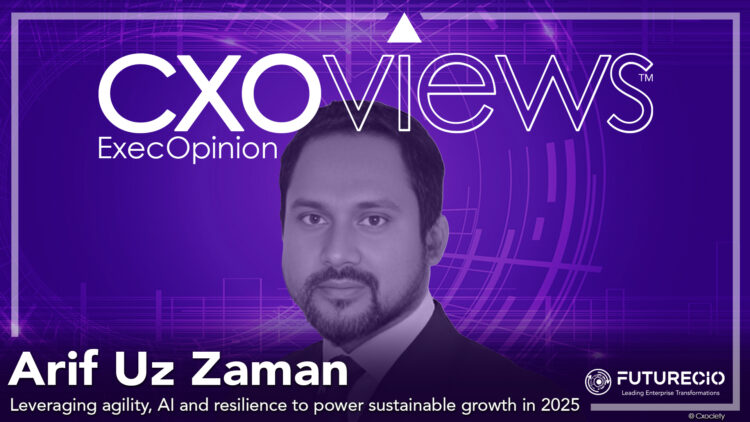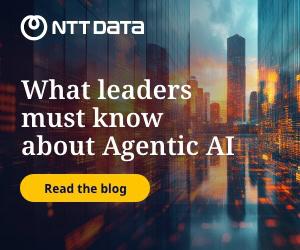As CTOs and CIOs in Asia navigate the rapidly evolving digital landscape of 2025, fostering a culture of agility and collaboration within IT teams is crucial. This can be achieved by promoting cross-functional teams and encouraging open communication to enhance responsiveness to market changes.
Integrating a zero-trust security model, which operates under the assumption that all users, devices, and applications are potentially compromised, into existing IT architecture is vital for protecting against cyber threats. This involves continuous verification of user identities and limiting access privileges to minimise potential breaches.
AI-driven predictive analytics can significantly enhance decision-making in infrastructure management. Predicting potential issues, optimising resource allocation, and improving reliability not only saves time and resources but also ensures a proactive approach to system management.
To ensure application flexibility, strategies such as modular design and cloud-native technologies can facilitate rapid deployment in response to changing business needs. Continuous professional development prepares IT teams to adapt to emerging technologies.
Finally, assessing disaster recovery plans involves evaluating their effectiveness through regular drills and updating them to ensure business continuity during disruptions.

Arif Uz Zaman, head of technology for Transcom, discussed leveraging agility, AI, and resilience to power sustainable growth in 2025.
Culture of agility and collaboration
Transcom, a Bangladeshi business involved in different sectors such as the beverage sector, pharmaceuticals, newspaper and electronics, foods, and OTT platforms, acknowledges these valuesand takes measures to foster them. Zamansaid it took a while to make changes as he noticed different silos within the team with varied business priorities.What helped the company was bringing people together and encouraging collaboration.
"Now, their mindset is aligned. We have declared a unified squad structure for delivery. Team members from different groups are onboarding, and we also encourage the business team to be part of our IT team. Since we have around 30 different businesses, this collaboration ensures business teams work closely with IT. They understand the challenges and actively participate in designing solutions, ultimately delivering the best possible outcomes," he said.
A collaborative team mindset facilitated Transcom's success in developing new solutions. Zaman proudly shared that the company is the first to implement OKRs (Objectives and Key Results) in Bangladesh. This includes an internally built solution, which has been rolled out across twelve businesses.
"To enhance collaboration, I have worked to bring everything under one unified platform, ensuring that all employees can work together efficiently. Cross-functional collaboration is a key focus, and we are integrating AI-driven and automated solutions," he added.
Our goal is to ensure faster deployment, stronger collaboration, and greater contributions to business growth, Arif Uz Zaman
Moreover, internal collaboration allowed Transcom to implement CI/CD (Continuous Integration/Continuous Deployment) pipelines and automation to accelerate the process. In infrastructure management, the company incorporates automation to enhance agility.
"Our goal is to ensure faster deployment, stronger collaboration, and greater contributions to business growth," Zaman added.
Integrating a zero-trust security model
As the head of technology, Zaman initiated the inclusion of zero-trust in their business, making them the first corporate partner to collaborate with Microsoft, Cisco, Google, and other big partners. Through partnerships, they have onboarded modern email solutions, assessed internal infrastructure, and built strong identity and access management (IAM).
Transcom has strengthened IAM by implementing Zero Trust security and least privilege access to ensure strict control over system access.
Zaman said they use micro-segmentation to categorise businesses, units, and users based on their applications and solutions. Before allowing network access, they also secure all endpoint devices, including mobile phones.
With a mix of on-premise data centres and cloud environments across twelve businesses, they have created a unified security framework seamlessly integrating cloud and local infrastructure. This comprehensive IAM strategy ensures strong security, controlled access, and smooth system operations.
Since threats are repetitive and constantly evolving, AI plays a crucial role in detecting, analysing, and mitigating risks proactively. Arif Uz Zaman
AI-driven predictive analytics
Zaman believes a single person and team cannot manually handle increasing threats and cyberattacks. This is where AI-driven analytics come in.
"From an AI standpoint, we are constantly exploring how AI can enhance our infrastructure security and operational efficiency… Since threats are repetitive and constantly evolving, AI plays a crucial role in detecting, analysing, and mitigating risks proactively," he said.
He added that many organisations, including theirs, see the benefits of AI-driven security frameworks, such as Zero Trust models, to ensure effective and proactive threat management. Technology enables automated threat detection and response to recognise and counteract risks more efficiently than traditional methods.
For example, Transcom maximises AI-driven security solutions to optimise resource allocation, enhance resilience, and improve proactive threat management.
With real-time insights and global security updates, AI's role in securing infrastructure is critical to ensure a safer and more intelligent defence system.
Agility
According to Zaman, Transcom embraces agile development and a "fail fast, learn fast" approach. He said previously they would fully develop an application before delivering it to the business. However, they have shifted to an incremental development approach. As soon as an innovation emerges, they build small applications or modules and quickly provide them to the business for testing.
"Some ideas may not work, but we celebrate these learning experiences and use the insights gained to refine and improve our next developments," he said.
Collaboration is at the core of their strategy, ensuring constant engagement between business, IT, and technology teams and fostering functional collaboration at every stage. Zaman believes this approach enables them to build robust infrastructure and IT solutions that are aligned with business needs.
Professional development
Professional development is key to adapting to emerging technologies and methodologies. At Transcom, they focus on two aspects of professional development: technical knowledge and skills. The company actively trains its employees through workshops, knowledge-sharing sessions, and collaboration. Team members regularly share their expertise, allowing cross-team learning to take place. This fosters an environment where employees learn from structured training and each other.
Beyond technical skills, he shared the importance of behavioural and professional training by providing online courses, technical sessions, and specialised training on microservices, authentication, governance, and development.
Ensuring employees' preparedness and constant learning is essential for driving infrastructure improvements and technological advancement.
Assessing effectiveness
According to Zaman, CIOs must prioritise the effectiveness of current disaster recovery plans to ensure business continuity through cloud-based resilience.
"One crucial aspect of resilience and disaster recovery (DR) is ensuring that all critical systems—including ERP, transactional systems, and sales platforms—are hosted in the cloud. Since these systems are essential to business operations, we have adopted a multi-cloud strategy to avoid reliance on a single provider," he said.
Moreover, he advises CIOs to implement regular DR audits to assess the functionality of disaster recovery mechanisms.
Further, he believes in robust backup and recovery policies. While leveraging multiple clouds, backups are also stored on-premises for additional security.
"Even though we have multiple clouds, we also take the backup in our data centre and keep some backup," he said, adding that daily snapshots and automated DR executions ensure readiness.
They also run routine DR testing, simulation, and business-critical continuity planning to monitor whether their systems work correctly, even during unexpected disruptions. Even during a nationwide internet outage, the company's essential pharmaceutical sales systems remained operational by connecting to local branch offices via data centres.
"Proper disaster recovery involves continuous testing and simulation. This is important because we are building data disaster recovery and have our data centre and cloud, so this simulation is happening. That way, we can build infrastructure resilience for the future journey," he said.
Powering sustainable growth
While disaster recovery ensures operational resilience, sustainable business growth requires a proactive approach to technology adoption. Organisations must strategically integrate technology, agility, AI, and cybersecurity to achieve sustainable business growth. However, technology must consistently deliver business value rather than being implemented for the sake of innovation.
According to Zaman, their approach to technology adoption is built on close collaboration between IT and business. IT and business teams’ partner, often visiting remote locations to understand operational challenges and pain points. This approach allows IT to provide solutions that directly address business needs rather than implementing technology in isolation.
Moreover, they push for the adoption of business-led technology. Instead of IT teams pushing for technology adoption, business teams recognise the need for solutions and advocate for them in management meetings. As a result, leaders understand technology decisions better, facilitating faster implementation.
Lastly, there is proactive technology integration, where the business impact justifies any new technology implementation. Zaman said that this approach has ensured that every technology initiative has been approved for over two years with little resistance from management as the business teams validate the need.
Zaman said they ensure operational continuity and drive long-term business success by focusing on resilience, business alignment, and proactive technology adoption.
At the heart of any technological transformation is people. IT teams must work hand in hand with business leaders to ensure that technology investments are aligned with real business needs. More than just technical concerns, disaster recovery, cybersecurity, and AI are strategic imperatives that power sustainable growth.





